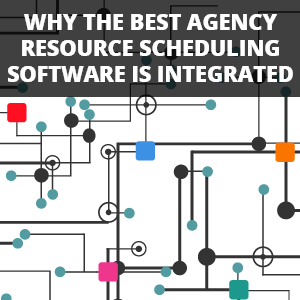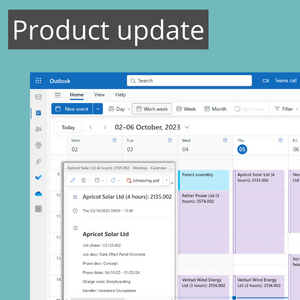7 ways to improve your agency’s utilisation rates
| In: Resource management

Utilisation rates are the cornerstone of an agency’s success. They show you how much time staff are spending on chargeable client work versus work that isn’t directly bringing in any income.
Essentially, utilisation rates are your chargeable hours.
While every hour spent at work in your agency is valuable, not every hour has monetary value. Think internal meetings, lunch breaks, pitches, new business, admin...
At best, the most you can expect is seven hours billable time in a seven and a half hour working day, but for many staff the figure will be much lower than this. (See agency utilisation rate benchmarks)
Utilisation rates will vary across different agencies and the individuals within them. What's important is you set realistic targets to measure against and make sure your teams are spending the right amount of time on chargeable work.
This isn’t about flogging people or encouraging a culture of long working hours. It’s about using your team's talents to best effect. If people are underutilised, they’ll be bored and unfulfilled. Plus, that’s not going to be good for your bottom line.
Get them right and you can count on growth. Get them wrong and you’ll be counting the costs.
A small increase in utilisation across a whole team can really start to boost your numbers. Imagine you have a team of 10 designers, charged at £100ph, each with a utilisation rate of 65%. Multiplied by the number of hours they work — they could generate £1,131k of revenue per year. Now, increase their utilisation rate to 75% — they could generate £1,305k per year — that’s an extra £174k!
Here are seven key ways you can improve your utilisation rates and keep your chargeable hours up where they belong:
1. Track all time
Sometimes, when team members know how much time they’ve been allocated for a job, this is all they log.
But that will just leave you scratching your head, wondering where all their hours have gone.
It’s important for people to understand they need to log all the time spent – as this will tell you if the project is overrunning and give you a chance to fix it before you really blow the budget.
It might be the creative has just devoted more time to the job because they haven’t got anything else to do. You can take the commercial decision to overservice if that works for you this time. But it shouldn’t really become a habit – if team members are twiddling their thumbs, it may be you need to be looking at bringing in more work.
Knowing how long a job actually took can also help you accurately estimate for similar work in the future.
2. Make sure you’re selling the right hours
Ideally, you want everyone fully occupied on chargeable work as much as possible.
What you want to avoid is one team being completely overloaded while others are underoccupied.
Look to your pipeline to see what’s coming in for each department. If there are gaps, your sales team can look to fill them. If there’s too much to handle, you could consider freelancers. But don’t be tempted to just sell whatever hours you can without some forward planning – it might sound like the profitable way forward, but it’s actually a surefire path to chaos.
Read: How to manage capacity with Synergist
3. Keep your scheduling accurate
You need to keep your teams on track with how long they spend on a job, and this comes down to your scheduling.
Overbooking time means people will finish the job early and have nothing to do, or they’ll spend longer than you’ve quoted by constantly honing the work.
This isn’t about filling people’s time or stretching a job out. It’s about accurate estimating and booking the right amount of time to keep your chargeable hours on track.
4. Make sure briefs are ready on time
The creative is ready, the work is scheduled in... but there’s no brief.
So your allocated team member sits around and waits, not doing any chargeable work, until you’re ready to brief, by which point they should be working on another job. Which means chargeable time has been wasted, and other jobs are now stacking up.
Essentially, if a job has been scheduled, the brief should be ready.
It’s a good idea to keep all project information in one place, including briefs, estimates and other communications. This means everyone involved can access everything – not be waiting for one person who has all the information in their inbox.
5. Invest in staff development
It might sound counterproductive to utilisation rates, but sometimes you have to invest time to make time.
It’s tempting when deadlines are tight to throw all the work at your most experienced people – but this can leave them with too much to do while more junior staff are sitting around.
Upskill your teams by having juniors shadow their more senior counterparts where possible, so in the future they can pick up the work with confidence.
6. Keep your processes tight
Operations, processes and procedures might seem boring for a creative agency, but getting them right and standardising them across your business can make everything much more efficient.
Think templates, streamlining and automating – anything you can do to make life easier for people will free up their time to work on chargeable projects.
7. Minimise your meetings
Time spent sitting in meetings is time not spent on chargeable work.
Of course, some meetings are necessary, but not all of them for everyone. Ditch any surplus meetings, or at least make sure you’re inviting only the people who do need to be there.
The same goes for admin. Keeping tasks as simple and straightforward as possible can free up time.
Utilisation rates need careful management. Aim too high, and you’ll end up with stressed-out and fed-up people. Set them too low, and you’ll start losing money.
It’s always worth giving attention to how you can free up people’s time, how it can be spent more effectively and how keeping your processes and systems streamlined can help. Resulting in happy people with manageable workloads... and boosting your revenue and profits in the process.
Read more: Agency utilisation rates: everything you need to know

 Why the best agency resource scheduling software is integrated
Why the best agency resource scheduling software is integrated  What is Project Management
What is Project Management  New feature: two-way Outlook Calendar integration
New feature: two-way Outlook Calendar integration